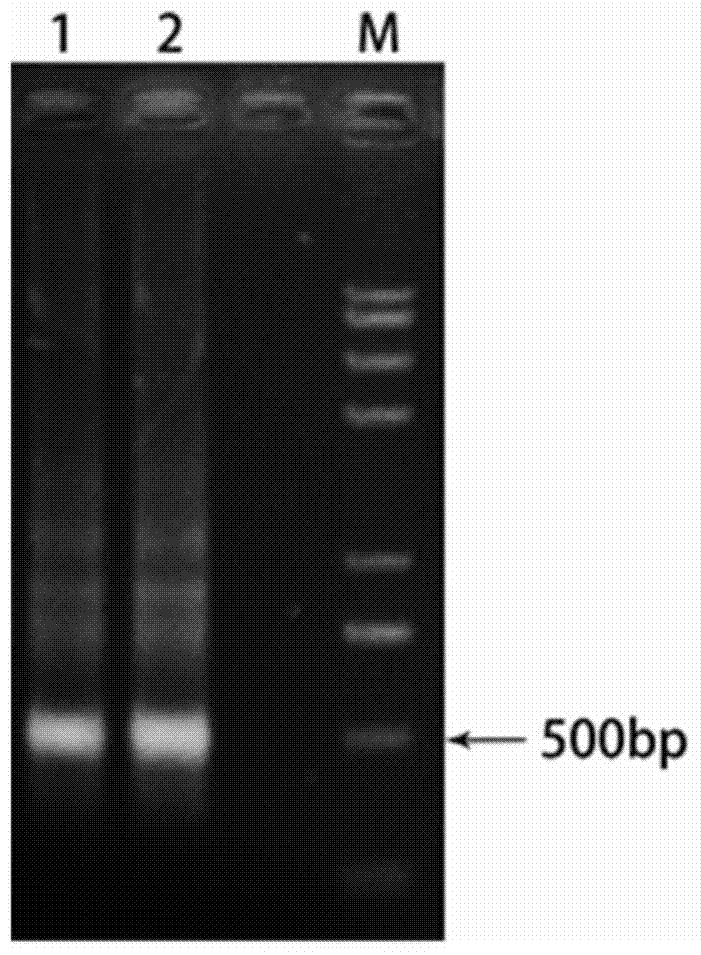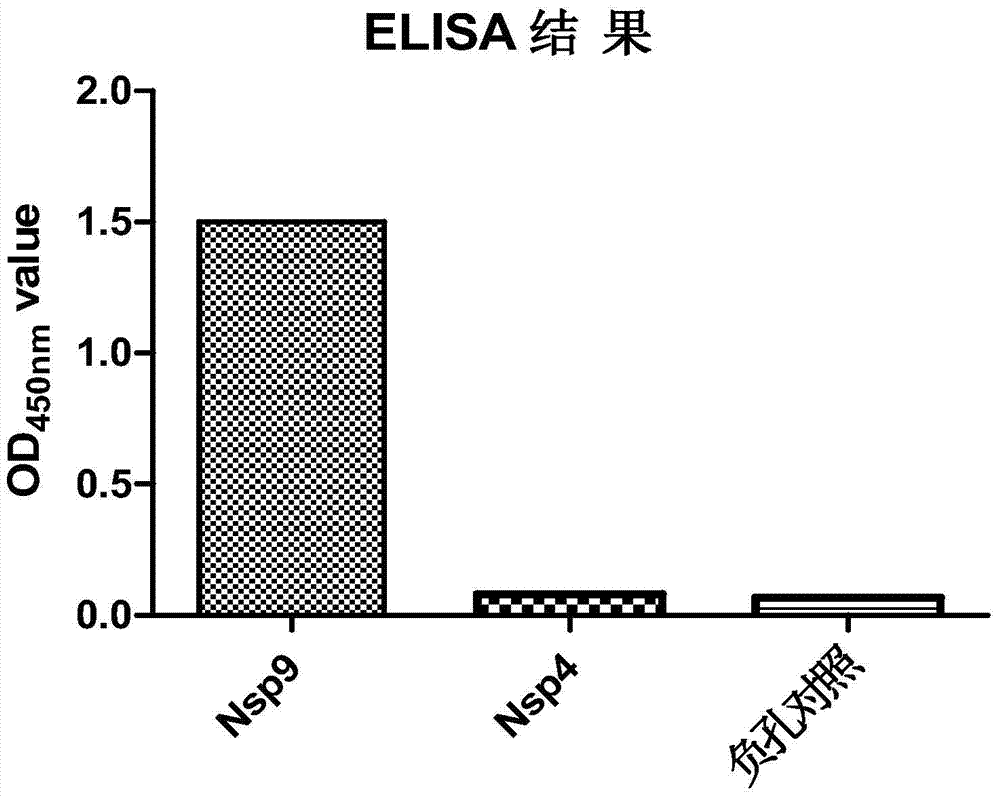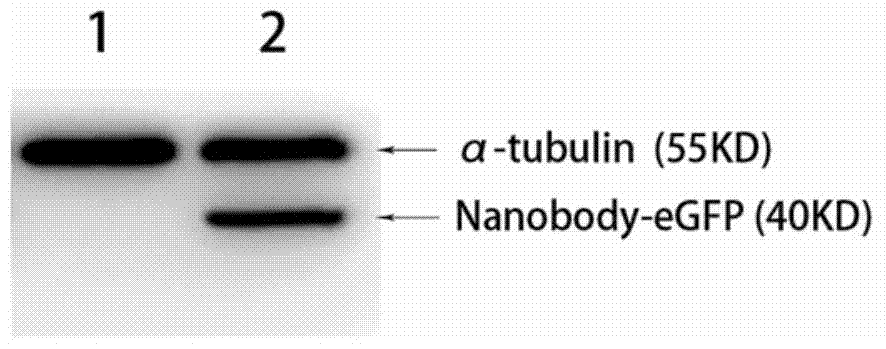Specific binding PRRS (Porcine Reproductive and Respiratory Syndrome) virus non-structural protein Nsp9 nanobody and application thereof
A non-structural protein and nano-antibody technology, applied in the direction of anti-viral immunoglobulin, application, antibody, etc., can solve the problems of no PRRS virus and limited protective effect, and achieve the effect of inhibiting the proliferation of PRRS virus
- Summary
- Abstract
- Description
- Claims
- Application Information
AI Technical Summary
Problems solved by technology
Method used
Image
Examples
Embodiment 1
[0024] Example 1: Construction of a nanobody library directed at PRRS virus nonstructural protein Nsp9:
[0025] (1) Mix 5ml of Nsp9 recombinant protein (1mg / ml) with Freund's adjuvant in equal volume and emulsify it evenly, and immunize an Alxa Bactrian camel once every two weeks, a total of 5 times, except for the first use Freund's complete adjuvant was used, and Freund's incomplete adjuvant was used for the remaining several times. (2) After the 4 times of immunization, the camel peripheral blood lymphocytes were extracted and total RNA was extracted, and the operation was performed according to the instructions of the QIAGEN RNA extraction kit. (3) According to Invitrogen III First strand synthesis system kit instructions, reverse transcribe the extracted RNA into cDNA and use nested PCR to amplify the VHH chain, the first round of PCR:
[0026] Upstream primer: GTCCTGGCTGCTCTTCTACAAGG
[0027] Downstream primer: GGTACGTGCTGTTGAACTGTTCC
[0028] Amplify the fragment ...
Embodiment 2
[0034] Example 2: Nanobody screening process against Nsp9:
[0035] (1) Nsp9 recombinant protein (10 μg / well) dissolved in 0.01 molar pH7.4 PBS was coated on a NUNC microtiter plate, and placed overnight at 4° C., and a negative control was set up at the same time. (2) Add 200 microliters of 2.5% skimmed milk powder the next day, and block at room temperature for 2 hours. (3) After 2 hours, add 100 μl phage (1x10 11 pfu camel nanobody phage display gene library), at room temperature for 1 hour. (4) Wash 15 times with PBST (PBS containing 0.05% Tween 20) to wash away unbound phages. (5) Triethylamine (100 mM) was used to elute the phages specifically binding to Nsp9, and the phages were infected with Escherichia coli TG1 which was growing in logarithmic phase, and the phages were produced and purified for the next round of screening. After 3 rounds of screening, positive clones were enriched.
Embodiment 3
[0036] Example 3: Identification of a single positive clone by enzyme-linked immunosorbent assay (ELISA):
[0037] (1) After three rounds of screening, the TG1 cells infected with phage were spread on the LB-AMP agar plate according to a certain dilution ratio, and 96 single clones were randomly picked and inoculated in the TB-AMP medium to grow to the logarithmic phase, Add IPTG at a final concentration of 1 mM, and culture overnight at 37°C. (2) Collect the bacteria, freeze and thaw once at -20°C, and the supernatant should contain nanobody fragments. (3) Add 100 μl of supernatant to the wells of the ELISA plate coated with Nsp9, and add 100 μl of the supernatant to the wells of the control protein Nsp4-coated and uncoated ELISA plates respectively, and place at room temperature for 1 hour. (4) Wash 5 times with PBST, add Rabbit anti-E tag antibody (polyclonal antibody of rabbit origin, purchased from Nanjing GenScript Company), and let stand at room temperature for 1 hour....
PUM
 Login to View More
Login to View More Abstract
Description
Claims
Application Information
 Login to View More
Login to View More - R&D
- Intellectual Property
- Life Sciences
- Materials
- Tech Scout
- Unparalleled Data Quality
- Higher Quality Content
- 60% Fewer Hallucinations
Browse by: Latest US Patents, China's latest patents, Technical Efficacy Thesaurus, Application Domain, Technology Topic, Popular Technical Reports.
© 2025 PatSnap. All rights reserved.Legal|Privacy policy|Modern Slavery Act Transparency Statement|Sitemap|About US| Contact US: help@patsnap.com



